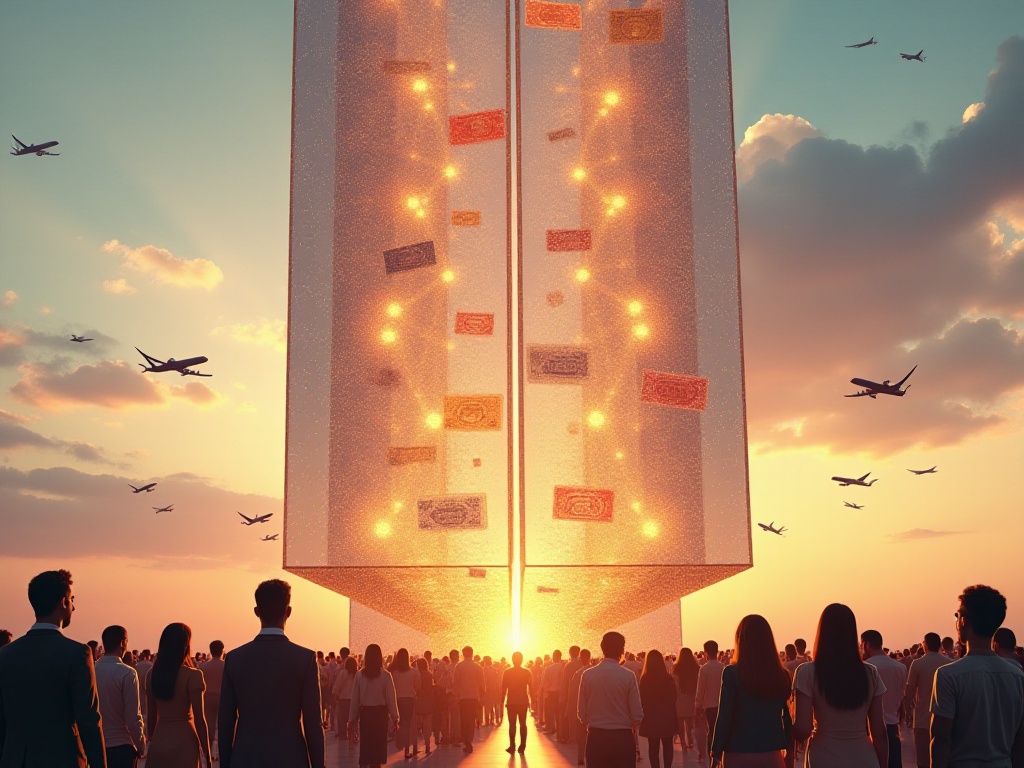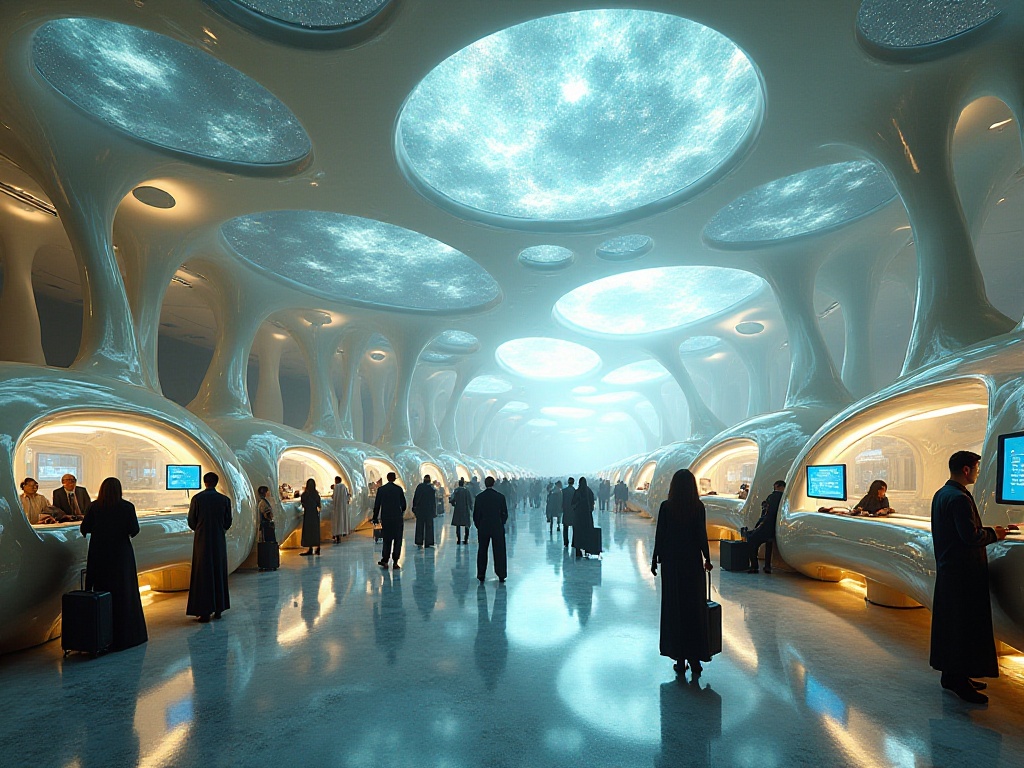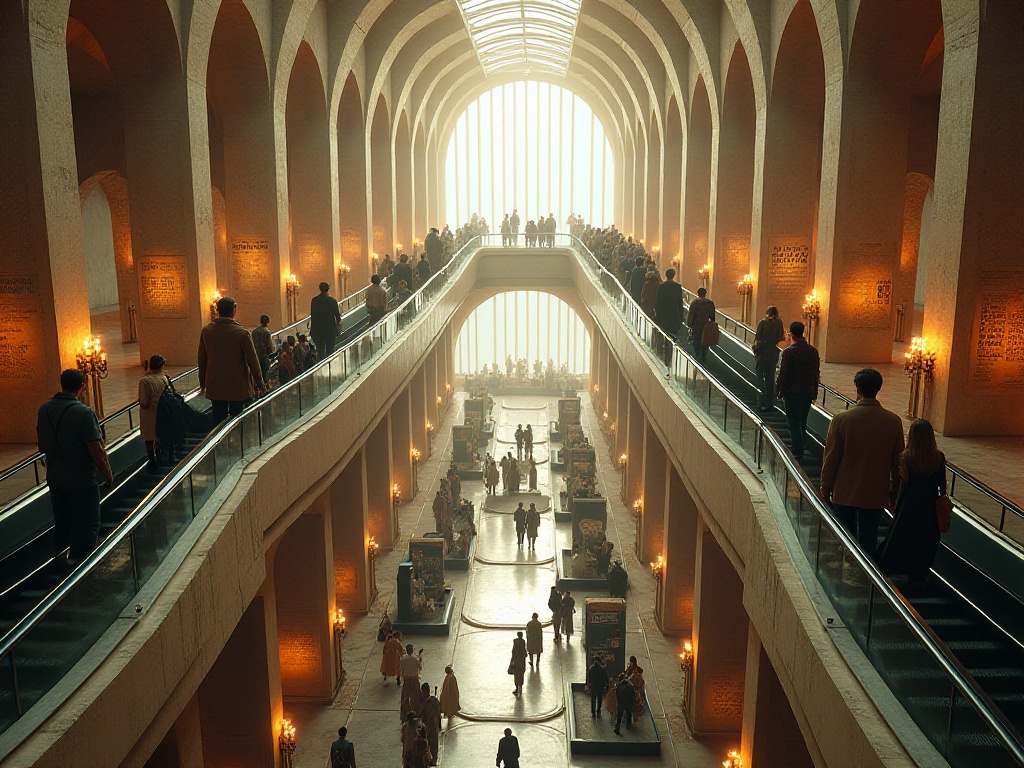As a post-95s blogger who has lived in the US for several years, I empathize whenever I see readers anxious about visa applications in the comments section. I remember when I first applied for a visa, I was completely confused, and the information I found online was a mess. Honestly, I was as nervous as if I were taking the college entrance exam, worried that something might go wrong. But after going through the visa application process multiple times, I discovered it wasn't as daunting as imagined - the key is knowing the right approach.
Now I can handle various visa issues with ease. Whenever I see friends worried about visas, I want to share my experience. After all, knowledge is meant to be shared, and I believe that with proper preparation, everyone can successfully obtain a visa.
When it comes to visas, many people's first reaction is "it's so difficult." But let's think about it differently - a visa is like a "pass" or "permit" from a country. It's similar to giving someone a heads-up before visiting their home, right? The principle is actually quite simple.
The US visa system is arguably the most comprehensive in the world, but also the most complex. When I first looked at US visa types, I was completely overwhelmed. The visa letter codes alone include A, B, C, D, E, F, H, I, J, K, L, M, N, O, P, Q, R, S, T, U, V, W, etc., each followed by different numbers - it was like reading hieroglyphics.
However, for regular tourists, the most common is the B-type visa. B-type visas mainly come in three varieties: B-1 business visa, B-2 tourist visa, and B-1/B-2 combination visa. The combination visa is particularly useful as it can be used for both business visits and tourism - two purposes with one visa, making it quite cost-effective.
I remember my first application was for a B-1/B-2 combination visa. I chose this type because I wanted to attend a business conference and do some sightseeing afterward. It proved to be a wise choice as the visa had a long validity period and was very flexible to use.
Note that visa type selection should be based on your actual purpose for visiting the US. For example, if you're purely traveling for tourism, a B-2 visa is sufficient; if you're going for business meetings, you'll need a B-1 visa. Choosing the wrong visa type not only increases the risk of rejection but could also cause trouble during entry even if the visa is approved.

With a B-2 tourist visa, your range of activities is quite broad. First, basic sightseeing is definitely allowed. On my first trip with this visa, I visited the Grand Canyon, and the impact of that experience stays with me to this day. Arriving at the viewing platform at 5 AM to wait for sunrise, watching the sun rise from the canyon's edge as the entire canyon slowly filled with golden sunlight - that moment made the whole trip worthwhile.
In New York, I often wandered around Times Square. It's always bustling with people, huge LED billboards flashing 24 hours a day, and street performers performing one after another. Although locals might say it's too commercialized, for first-time visitors to New York, it's definitely a must-visit spot.
Something many people don't know is that B-2 visas also allow for short-term medical tourism. For instance, you can get a physical examination or visit a general clinic. I have a friend who specifically used a tourist visa to get a full body check-up in the US and also visited a dentist. However, note that for long-term treatment of serious illnesses, you'll need to apply for a specific medical visa.
Additionally, you can participate in amateur short-term courses or activities. I attended a three-day photography workshop, and although I couldn't get official course credits, the techniques I learned and the friends I made made the experience very valuable.
During your stay in the US, you can also visit friends and relatives. When I was in Los Angeles, I reunited with a high school classmate I hadn't seen in years. We went to Universal Studios together, strolled down Hollywood Boulevard, and watched the sunset at Santa Monica Beach - that feeling of reunion after a long separation was truly warm.
Shopping is also allowed under a tourist visa. From luxury stores on New York's Fifth Avenue to outlet discounts, from supermarket daily necessities to electronics, you can purchase any legal goods. However, remember to keep your receipts, especially for expensive items, as you may need to show them to customs when leaving the country.
After covering what you can do, we must emphasize what you can't do. These taboos are lessons learned the hard way! I've personally witnessed several cases of people being deported for violating visa regulations.
First and most importantly, you cannot work or engage in any income-generating activities with a tourist visa. This definition of "work" is very broad, including full-time work, part-time work, temporary work, and even helping out at a friend's store. I know a friend's roommate who was caught working at a restaurant with a tourist visa - he was not only deported but also banned from entering for several years.
Secondly, you cannot attend formal study programs with a tourist visa. This refers to courses that offer credits or require formal enrollment. For example, you can't attend university courses, vocational training programs, or formal English language courses at language schools. If you want to study in the US, you need to apply for a specific student visa (F-1 or J-1).
Another restriction many people don't know about is that you cannot engage in any media activities. Even if you're a social media influencer, you can't use a tourist visa to conduct interviews or report news. I know of a social media blogger whose visa was revoked after being discovered interviewing Chinese entrepreneurs in the US.
Performances and shows are also strictly restricted. If you're a professional performer or artist wanting to perform for payment in the US, you need to apply for a specific performance visa (P or O visa). Even participating in a small paid performance is not allowed with a tourist visa.
A special reminder: giving birth in the US is strictly prohibited. This has been under particularly strict scrutiny in recent years. Customs pays special attention to pregnant women entering the country, and if they discover intentions of birth tourism, it can result in denied entry and affect future visa applications.
There are also some easily overlooked details, such as not being able to participate in any political activities, religious missionary activities, or any form of business negotiations or contract signing (these require business visas).
In general, the core of a tourist visa is the word "tourism." Any activity beyond tourism should be approached with extreme caution. Remember, violating visa regulations has serious consequences, from being denied entry to potentially being permanently banned from entering the US.

The application process is both simple and complex. Simple because it consists of just four steps: preparing materials, filling out forms, paying fees, and scheduling an interview. But it's complex because each step contains many details.
First, let's talk about material preparation. Basic materials include passport (valid for more than six months), ID card, household registration book, employment or student certification, income proof, bank statements, property ownership certificates, etc. These materials should be complete and valid. I suggest starting to prepare these materials three to six months in advance, especially bank statements, which should show stable income and sufficient savings.
Filling out forms is a technical task. The main form is DS-160, which has dozens of pages and many questions. My first time filling it out took two entire evenings. Note that all information must be truthfully provided without any false information. Pay special attention to work history, education history, and travel history - verify everything carefully before filling it out.
Fee payment is now mostly done online - remember to print the receipt after payment. Currently, the tourist visa fee is $160, which is non-refundable even if the visa is denied. So evaluate your conditions carefully before applying.
The interview appointment might be the most nerve-wracking part. Many consulates now offer interview waivers, but specific situations depend on local policies. If an interview is required, I suggest choosing weekday morning slots, as visa officers tend to be in better moods then. During the interview, maintain a neat appearance, answer questions concisely, and be sincere.
My first interview experience still makes me nervous thinking about it. I woke up at 5 AM that day, afraid of being late. When I arrived at the consulate, there was already a long queue. When it was my turn, the visa officer asked me three questions: why I was going to the US, where I worked, and how much I earned. After I answered truthfully, he stamped my passport, and the whole process took less than three minutes.
But not everyone is this lucky. I have a friend who had to provide additional materials and make several trips because their answers were vague. So prepare answers for possible questions before the interview.
Most importantly, remember that visa officers mainly focus on whether you have strong ties to your home country. So when preparing materials and answering questions, emphasize this point. For example, stable employment, property ownership, and family ties are good evidence.
When it comes to visas, each country has different regulations, which confuses many people. From my experience visiting several countries, each place offers a different experience.
Countries like Afghanistan require visas for both business and tourism, and the application process is quite complex. But Albania is very friendly - citizens of many countries can enter visa-free for stays up to 90 days.
The European Schengen visa is interesting. Although the application process is quite troublesome and requires many materials, one visa allows you to visit 26 countries, making it very cost-effective. I remember choosing France as my main application country for my first Schengen visa because my itinerary focused on France. After getting the visa, I not only visited France but also Italy and Spain - very convenient.
Japan's visa policy has changed significantly in recent years. Previously, applying for a Japanese visa was quite complicated and required many materials. But now they've implemented visa-free policies for tourists from many countries, making travel much more convenient.
Singapore's visa system is very user-friendly, mostly using electronic visas that can be completed online. I remember receiving my visa the day after submitting the application and payment - very efficient.
Although Australia's visa is also electronic, the review process is quite strict. They carefully examine your travel history, financial status, etc. However, approval rates are still high if materials are well-prepared.
Thailand's visa policy is very flexible, allowing both advance applications and visa-on-arrival. However, I recommend applying in advance as visa-on-arrival queues can be very long.

Through years of experience, I've summarized some practical tips that I hope will help friends preparing for visa applications.
First, regarding passports. Many countries require passports to be valid for at least six months upon entry, some even longer. So check your passport's validity before applying for a visa. If it's expiring soon, get a new passport first.
Financial proof is crucial. Different countries have different requirements for financial proof, but the basic principle is proving you have sufficient funds for the trip. I recommend preparing bank statements from the last three to six months, and if you have fixed deposits or investment products, include those certificates too.
Return tickets are a hard requirement for many countries. Although some countries allow you to book return tickets after entry, it's safer to book in advance. Check airlines' refund and change policies when booking to avoid non-refundable tickets if the visa isn't approved.
Accommodation proof is also important. For independent travel, book hotels in advance and print confirmation receipts. For group tours, you'll need the travel agency's itinerary. Some countries check detailed travel plans, so it's best to plan out your daily activities.
Employment or student certification is important proof of ties to your home country. Employment certificates should be bilingual (local language and English), with company letterhead, seal, and information about your position, salary, and employment date. Students need enrollment certificates from their schools.
Insurance shouldn't be overlooked. Many countries require visitors to have travel insurance meeting certain coverage standards. Consider buying insurance when booking flights to handle everything at once.
Finally, remember there's no 100% guarantee for visa applications. Even with thorough preparation, rejection is possible. So leave enough time when planning travel, don't schedule too tightly. If rejected, don't be discouraged - learn from the experience and try again when conditions are better.

After so many visa applications, my biggest realization is: visas aren't that scary - the key is understanding and following the rules. Like playing a game, once you master the rules, passing becomes easy.
I still remember my joy when I first got my US visa. Looking at the visa page in my passport, thinking about traveling to a new country and starting new adventures - that feeling of anticipation and excitement remains unforgettable.
Over these years, I've visited many countries, experienced different cultures, and met friends from around the world, making my life richer and more colorful. And it all started with getting that first visa.
So, if you're interested in visiting a country, don't be discouraged by visa requirements. Trust me, with proper preparation, you can definitely get your desired visa and start your own amazing journey.
After all, there are so many beautiful sights to explore and interesting people to meet in this world. And a visa is just the key to opening that door. Let's work together to explore this wonderful world!
 Previous
Previous



